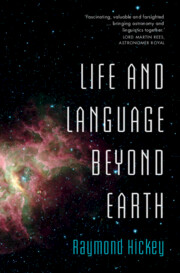Book contents
- Life and Language Beyond Earth
- Reviews
- Life and Language Beyond Earth
- Copyright page
- Contents
- Tables and Figures
- Preface
- How to Use This Book
- Part I Introduction
- Part II The Universe We Live In
- Part III Our Story on Earth
- Part IV The Runaway Brain
- 15 The Brain-to-Body Relationship
- 16 How Brains Develop
- 17 Our Cognition
- 18 Consciousness
- 19 Artificial Intelligence
- Part V Language, Our Greatest Gift
- Part VI Life and Language, Here and Beyond
- Book part
- Glossary
- Timelines
- Figure credits
- References
- Bibliography
- Index
16 - How Brains Develop
from Part IV - The Runaway Brain
Published online by Cambridge University Press: 16 September 2023
- Life and Language Beyond Earth
- Reviews
- Life and Language Beyond Earth
- Copyright page
- Contents
- Tables and Figures
- Preface
- How to Use This Book
- Part I Introduction
- Part II The Universe We Live In
- Part III Our Story on Earth
- Part IV The Runaway Brain
- 15 The Brain-to-Body Relationship
- 16 How Brains Develop
- 17 Our Cognition
- 18 Consciousness
- 19 Artificial Intelligence
- Part V Language, Our Greatest Gift
- Part VI Life and Language, Here and Beyond
- Book part
- Glossary
- Timelines
- Figure credits
- References
- Bibliography
- Index
Summary
Humans are mammals, a group of vertebrate animals with backbones, an internal skeleton and a nervous system controlled by a brain. However, the essential feature of mammals is that they give birth to live young, as opposed to other animals1 like reptiles and birds, from which we split off about 300 million years ago (mya), and which lay eggs from which their young later hatch. The word mammal derives from Latin mamma ‘breast’ and refers to the fact that the females of these animals breastfeed their young to begin with. This system is typical of cognitively advanced animals and there is probably a causal connection here. Live birth and breastfeeding result is a greater attachment between mother and young than does egg laying, adding an increased emotional dimension to the lives of the animals in question and thus providing a positive feedback loop for further cognitive development.
- Type
- Chapter
- Information
- Life and Language Beyond Earth , pp. 270 - 279Publisher: Cambridge University PressPrint publication year: 2023

